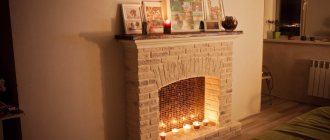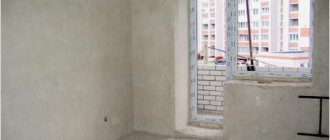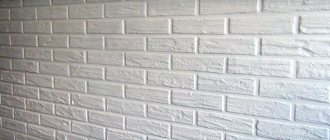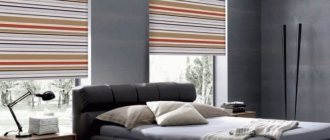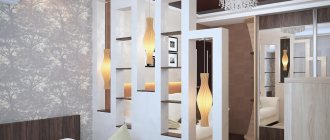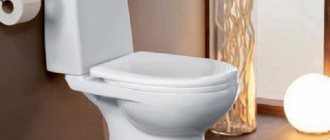In small hallways or in addition to closets in bathrooms, kitchens and other living spaces, there are often wall hangers for storing various things. A wall hanger does not take up much space and can be a separate design move. Based on what parameters you choose a hanger and how to fix it on the wall yourself, read on.
Wall-mounted devices for storing clothes
Wall hanger in the hallway: varieties, classifications, instructions for making it yourself
In this article you will find useful information on the types of hangers in the hallway, as well as a detailed classification by shape.
No less important will be the step-by-step instructions for making a hanger yourself. A wall hanger in the hallway is a must-have attribute where it is not possible to install a closet or other furniture for storing outerwear. Today’s material is about which models are the most common and how to make a hanger yourself.
Details and elements
How to make shelves in a closet or how to build a closet from scratch? Here are the answers to the questions:
Tools you will need:
- screwdriver;
- screwdriver;
- drill;
- hex wrench;
- roulette;
- pencil, square or ruler;
Details for the cabinet itself:
- laminated chipboard sheets with a width of 70 to 40 cm - for the frame and internal partitions (sheets or false panels 10 cm wide - for framing the contour along the top and side walls in the case of a built-in wardrobe when attaching elements to the walls);
- The shelves themselves are for the cabinet;
- doors with a sliding mechanism - usually 2 or 3 (you can order ready-made ones or assemble them yourself - all components are sold in stores);
To attach shelves to a ready-made wardrobe or to assemble a built-in wardrobe, you will need the following parts:
- Dowels. With their help, the frame elements are attached to each other;
- Furniture corners, eccentrics, shelf supports or Euroscrews. One of the options for attaching shelves to a frame or wall. Corners and Euroscrews don’t look very nice, eccentrics are more difficult, but the shelf holders are almost invisible from either side.
- Guides for drawers;
- When choosing drawers, pay attention to the mechanism. The box should not roll out completely and fall.
- Drawer handles should not interfere with opening. To do this, the handles are made recessed or slots are left in the wooden panel.
Varieties
A set consisting of a hanger, a banquette and a shoe rack will make the interior of the hallway stylish and organic.
The uniqueness of the room will be given by a designer product that you can make yourself literally from scrap materials.
On sale you can find products for every taste and budget. Hangers are made from different materials: wood, metal, plastic and their combinations. They differ in color, style, shape and size, so there will be no problems with the choice.
Hangers are classified into several types.
The usual and most common vertical design visually makes the room taller. Hooks are placed in one line, diagonally or in a checkerboard pattern.
The design of the product is influenced not only by the fittings, but also by the supporting strip itself.
A fence hanger consists of several narrow strips of wood - hence the name. In this case, the shape of the product can be not only rectangular, but also round or wave-shaped. The wood color scheme is varied and consists of a wide range of shades depending on the type of wood.
On sale there are all-metal products with the ability to adjust the height of the hooks. These are budget models.
Note! When choosing a hanger, you need to take into account the material and load-bearing capacity of the walls. The weight of the clothes will be added to the weight of the hanger itself.
The horizontal design is more compact. It looks like a narrow panel with hooks made of wood, plastic or metal.
A special place is occupied by designer models of non-standard execution. In addition to its practical function, such a hanger plays the role of an expressive accent and decorates the hallway. From this series you can choose models that will highlight the style of the room or original children's hangers that will be appropriate in a child's room.
The transforming model consists of a bar and folding or retractable hooks pressed to the body. This is a functional model that allows you to use as many hooks as you need at the moment.
Multifunctional models are complemented by a shelf for hats and a mirror. More massive products are combined with a soft pouf and a cantilever shelf for small items.
A swivel stand with hooks on one side and trained shelves on the other is another type of floor design.
These models are recommended for square-shaped hallways, as they require more space in volume.
There are two types of hangers with additional elements. The first ones consist of several autonomously located functional modules. The second is one design with several functions.
Find out how to decorate a niche in the wall, and also check out the beautiful design options and instructions in a special article on our portal.
Prices for wall hangers in the hallway
Design nuances
The simplest design of a wall hanger, familiar to many, is a wooden or metal strip with hooks. Such models decorate the tiny hallways of Khrushchev apartment buildings. The sophisticated version is complemented by an upper shelf for hats. An important point in the design of such models is the number of hooks. They are selected in such a way that there are two hooks for each family member.
Hooks are often used as wall hangers
An equally common type is a stacked panel made of slats or narrow planks. They can be of different lengths and widths. This hanger looks aesthetically pleasing and stylish. In addition, hooks in this design can be located at different levels.
A hallway hanger is exactly the piece of furniture that will help you properly organize the space and put things in order.
The supporting panel can be solid, from one sheet. As an additional functional bonus, manufacturers offer hangers with a shelf for hats.
If the hanger is also complemented by a shelf, you will have somewhere to store hats and scarves
Advice! Since all wall hangers are open types, it is important that the mounting hardware is well disguised and does not spoil the appearance of the product.
To ensure a long service life of products, manufacturers use treatment of wooden and metal parts with moisture-resistant and anti-corrosion compounds.
All variations with the structural elements of the hanger, their shape and location, belong to the art of design.
Size selection
An ordinary wall hanger has more than one use - if there are a sufficient number of hooks, it is used to store bags and umbrellas.
If there is a wardrobe in the hallway, then a spacious multifunctional hanger will be inappropriate.
The smallest length of a wall hanger is 400 mm , the average size is from 600 mm. The length depends on the operating conditions of the product - the type and location of clothing, as well as on the area of the room. There is no point in purchasing a long crossbar if 1-2 people live in the apartment.
Types of fastening hangers and hooks
There are four main types of fastening:
Small hallway - 130 photos of real examples of organizing a practical and cozy design- Mirror in the hallway - an overview of the best ideas and options for beautiful mirror designs. 100 photos of an unusual combination in the interior of the hallway
Modern hallways - 130 photos of the most beautiful ideas for interior design. The best new designs of 2021
- screws;
- glue;
- suction cups;
- magnetic stripe.
The first option is the most durable. The screws have excellent resistance to heavy loads. Therefore, it is advisable to use hangers held on this mount for bulky clothes.
Fixing the hooks with suction cups or an adhesive base is suitable for hangers located in the bathroom, kitchen or nursery. It is recommended to mount them on a smooth wall.
Magnetic fastening is in low demand, since its presence requires the installation of a metal surface.
Selection of material and accessories
Hangers are usually made using several materials.
Since the main load falls on the hooks, they are made of metal - the most durable and reliable material. This is especially important in winter, when heavy, bulky clothes are hung on a hanger.
To make the body of the product, wood, metal or chipboard is used.
Traditional hangers made from solid wood are popular. They are characterized by a presentable appearance, reliability and environmental friendliness.
Chipboard is a budget alternative to wood. Modern methods of its processing make it possible to obtain interesting design embodiments.
Products made of bronze in a slightly rough manner will fit perfectly into the loft style. For the Provence style, elegant white models are suitable. For modern interiors they produce products with a laconic design. A metal hanger in the hallway will attract attention and become its main decoration. The disadvantage of the material is its heavy weight.
Stylish models, upholstered in genuine leather, have a luxurious appearance. There are different colors and designs available for sale.
Prices for a hanger in the hallway with a shoe rack
Designer clothes hangers with photos of models
If it weren’t for the designer’s imagination, our premises would have been boring and gray, devoid of any individual appearance, like the Abnegation faction from the acclaimed film based on the book Divergent. Let's be amazed and rejoice at the stylish interior solutions.
Stylish designer wall hangers
Who was looking for something stylish? Here are some ideas for different modern style solutions. Here the criterion is not only originality, but also how well such products can fit into the decor.
Stylish and modern
Great modern solution for a wooden wall hanger and looks very nice
For Provence, a product with cute naturalistic landscapes is suitable. And they will lift your spirits when you look at them, and they will pacify you
Original hangers for the hallway
Fantasy solutions often turn out to be not only amazing, but also very functional.
Flowing drops, but not liquid at all
This is a whole encrypted message on which it is convenient to place not only clothes and hats, but also long umbrellas
This option will be appreciated by people who have a lot of clothes. In any case, if there is no desire to hang something, the product folds and merges with the wall
Flower hooks? Yes please! But this option will not work if you hang a lot of things: instead of beauty, it will look like a bunch of things.
Color selection
White products will fit perfectly into any interior, as they go well with most shades. Moreover, even large structures do not look massive. Visually, they make the room lighter and more spacious. White color is easily soiled, so you need to be especially careful about keeping the hanger clean.
Since the hallway often cannot boast of a large area, the emphasis is on free space. Neutral beige and sand tones will complement the decor, make the room warm and cozy, but will not attract attention.
Wenge color is very popular. For metal products, white, black, brown, as well as bronze and chrome surfaces are best suited.
Materials for making hangers
Hanging wardrobes are made from the following materials:
Tree. Wooden furniture is most in demand because it is environmentally friendly, aesthetically attractive, durable and wear-resistant. As a rule, wooden furniture is treated with antiseptics to prevent damage to the wood over time;
MDF or fiberboard is a popular material for making cabinets. It is beautiful, and the cost of such furniture is much cheaper than the cost of furniture made from natural wood;
Plastic is an affordable, cheap material, but cannot withstand heavy loads. In addition, plastic is not environmentally friendly and does not last long.
When using metal for hanging wardrobes, you need to remember that such material is quite massive, which is why it is not so often used to create the intended structures for the hallway. In terms of cost, metal products are quite expensive;
MDF or fiberboard. The presented material is inexpensive, but multifunctional. An important fact is the possibility of implementing various, even extraordinary, design ideas.
Popular manufacturers
There are a large number of hangers on sale, but if you want to buy a truly high-quality item, it is recommended to take a closer look at the following manufacturers.
Table 1. Manufacturers' hangers.
| Illustration | Manufacturer | Description |
| Ikea | Popular in modern interiors are the maximum “Bjernum” models, which look like a metal plate on the wall, but if necessary, transform into a clothes holder with one movement. | |
| Leroy Merlin | Products from the French company are distinguished by their functionality and variety. Vertical and horizontal models made of metal, wood and chipboard are compact and have a laconic design. | |
| Stolpley | Budget hangers from a Russian manufacturer. The vertical design consists of several slats or a solid board with metal hooks. Also, the product range of this manufacturer includes horizontal models with and without a shelf. The products are made in popular wood tones. | |
| Sheffilton | Models of this brand are represented by both budget options made from chipboard and expensive products made from solid wood. Externally, the design of the products looks light and elegant. Made of metal, forged wall models have flirty curls or, on the contrary, a strict and restrained appearance. |
Leading manufacturers of wall hangers
The most famous manufacturer of furniture, including hangers for the hallway, is Ikea. This brand is on everyone's lips: despite some difficulties associated with assembly, the design of the products remains remarkable.
Clothes hanger from Ikea - we can hang outerwear, scarves, or hats
The Spanish brand Julia Grup is interesting. These are bright, impressive design solutions and workmanship.
Interesting model from Julia Grup
Metal and wood in original design from Julia Grup
Russian Titan manufacturers also produce hangers that are affordable to many.
Performance style
In order for the hanger to fit organically into the interior of the hallway, it must be made in the same style.
Table 2. Performance styles.
| Illustration | Style | Description |
| Classic | The material used is expensive wood. Structurally, the products are made in the form of a single panel or consisting of several parts with elegant chrome-plated, bronze or gold-plated hooks. There is no complex decor, since the main emphasis is the natural pattern and texture of the material. Models upholstered in leather would also be appropriate in a classic style. | |
| Eco style | This is a type of product that is easy to make yourself from wooden knots or branches. In order for such a hanger to serve for a long time, it is necessary to use strong, “healthy” branches treated with a moisture-proofing compound. Decorative finishing involves treatment with stain or varnish. If you paint such a hanger with bright paint, then against the background of a white wall it will look like an independent art object. | |
| Provence | In a hallway decorated in Provence style, a forged white hanger would be appropriate, as well as wooden products painted with white paint or a natural shade of light wood. Painted hangers can be additionally decorated with floral patterns and images of birds. | |
| Rustic | A style with a “masculine character”. You can make a hanger yourself from several boards that form a hand-knit shield. And hooks can be made of bent nails. The surface of the boards can imitate peeling paint. | |
| Loft | This style also uses forged or wooden hangers, but their appearance looks massive and somewhat primitive. There is no decor. You can create an imitation of rust on metal products. Externally, the hanger can imitate a water pipe. “Traces of time” are welcome on the surface of wooden products - abrasions, faded or darkened areas, uneven coloring and untreated surfaces. | |
| High tech | Modern minimalist styles feature chromed metal, clean lines and a sleek design. Hangers are made of metal or natural wood with a calm natural pattern. |
A partition can perfectly complement and decorate your apartment! Our article on sliding partitions for zoning a room describes the types of partitions and also provides step-by-step installation instructions.
Installation of decorative shelves and paintings
Heavier objects should be hung using special fastening devices.
Up to 10 kilograms
With such a load on the plasterboard surface, the ideal solution would be to use a “butterfly”. This option is a dowel consisting of a plastic sleeve with two spread legs on a rod and a threaded screw.
The product is attached according to the following diagram:
- Based on the size of the sleeve, a suitable drill bit for a screwdriver or drill is selected.
- Mounting points are outlined.
- The tool attachment is directed strictly perpendicularly. The resulting hole should be smooth, without deformation of the edges. To prevent such damage, you need to correctly set the power of the drill.
- The legs of the plastic element are straightened, and the sleeve is carefully inserted. It is not recommended to press hard, as the gypsum board may be damaged.
- To completely sink the product, a hammer is used, since there are two protrusions at the neck that fix the position of the part.
- The screw is screwed in. Due to this, on the reverse side the paws rest against the sheet.
After installing all the mounting points, you can hang a picture or mirror.
To use a standard butterfly mount in a plasterboard wall, you need to drill a hole with a diameter of 8 mm
Up to 30 kilograms
It is recommended to fasten massive objects that create a load of up to 25–30 kg per fixation point using a special dowel - Driva. Its structure is similar to the previous version, but the plastic element has a “snail” shape. The part is equipped with a sharp tip and thread located on the surface of the body. A special screw is used for fixation.
Fastening a shelf or other item is carried out according to the following algorithm:
- Installation points are marked and holes with a diameter of 6 mm are drilled. It is taken into account that the seat must be exactly perpendicular to the surface.
- After preparation, you need to screw on the plastic elements. This will require some effort, because the snail thread cuts into the structure. A screwdriver will make the process much easier. The neck of the dowel should be almost in the same plane with the wall.
- Depending on the fastening device of the item being hung, installation occurs by installing and tightening the screw.
Installation diagram for “Driva” fasteners
It is taken into account that Driva is divided into categories: plastic options are recommended for plasterboard bases, since metal ones do not provide reliable installation into such a surface.
Tips for choosing
To choose the right hanger, we advise you to consider the following recommendations:
Note! An important element of the wall structure is fasteners. The load-bearing capacity of the hanger depends on it.
Prices for floor clothes hangers
Wooden hangers in Provence style
Designs made using the “decoupage” decoration method contain drawings of flowers or landscapes of villages. The base of the hanger has a calm paint tone. Often the colors are white, blue or yellow.
There are also forged wall structures made in this style. Their difference lies in the interesting interweaving of thin twigs decorated with small leaves.
Self-production - step-by-step instructions
The main criterion that should be taken into account when choosing the height of a hanger and making it yourself is the anthropometry of its owner. A person should be able to freely reach the hook or the top shelf. If the height of family members differs significantly and there are children among them, then it is recommended to hang the hooks at different heights so that it is convenient for everyone to use the hanger.
Making your own simple design of a hanger with a cabinet below from boards looks like this.
Table 3. Making a hanger yourself.
| Illustration | Step, description |
| Step 1. You need to glue a shield from boards of the same width. To do this, they are placed on the edge and smeared with glue. | |
| Step 2. The boards are clamped in a given position with metal clamps. | |
| Step 3. To make the lower cabinet, you will also need to make shields - sides, bottom and top cover. To do this, markings are applied to the board. | |
| Step 4. The necessary parts are made according to the markings. | |
| Step 5. Glue the boards together: the boards at the ends are treated with glue. | |
| Step 6. The glue is distributed with a brush. | |
| Step 7. The boards are pressed tightly at the ends and secured with clamps. | |
| Step 8. The side walls on which the hat shelf will rest have a complex shape. To make it, you need to glue a long and a short board together. | |
| Step 9. The excess is cut off on the finished panels. | |
| Step 10. After drying, the supports are cut with a jigsaw, giving them the required shape. | |
| Step 11. Holes for fasteners are drilled in the finished panels. | |
| Step 12. Install the dowels and coat them with glue. | |
| Step 13. Install the dowels and coat them with glue. | |
| Step 14. The finished elements are sanded. | |
| Step 15. The edges are cut off, making them smoother. | |
| Step 16. Make holes for fasteners. | |
| Step 17. The top shelf is fixed to the dowels. | |
| Step 18. The top shelf is fixed to the dowels. | |
| Step 19. After assembly, the hanger is painted and the hooks are screwed on. |
Video - Clothes hanger made of boards and metal
Source
Making a traditional hanger
Such a wall hanger can be placed in the hallway of a city apartment, cottage, private house, bathhouse, etc. And the fact that you make it yourself will help not only save money, but also adjust the size, color, and number of hooks to suit the conditions of a particular room.
Necessary materials and tools
The wall hanger will be made from wooden planks or cut strips of laminated chipboard. This will help to significantly lighten the structure compared to solid wood or a sheet of chipboard. We will need:
- 6 boards for sheathing with dimensions 20x1220x1500 mm;
- 3 boards for horizontal installation with parameters 20x100x1120 mm;
- holder for hooks with dimensions 20x200x1070 mm;
- 6 hooks with holes for screws;
- upper shelf for hats with parameters 20x300x1070 mm;
- 2 sides for a shelf.
Tools you will need for work:
- furniture dowels – 30x10 mm;
- wooden furniture plugs;
- wood screws - 35 mm (not more than the sum of the thicknesses of the parts that must be fixed);
- PVA glue for wood;
- melamine edge, iron;
- stain to change the color of the coating;
- water-based acrylic varnish;
- electric drill with drills;
- electric jigsaw;
- hand saw (circulating);
- screwdriver;
- hammer;
- wood hacksaw;
- tape measure (3 m), ruler, square;
- abrasive sandpaper.
Step-by-step assembly description
Before you start assembling the hanger for the hallway with your own hands, you should carefully read the diagram. If the product you need should be larger or smaller in size, make the necessary adjustments and prepare the components according to them.
Get ready for work. Carefully process the cut wooden or chipboard parts in the cut areas with abrasive sandpaper; all existing corners and sharp edges should be rounded. Remove burrs, chips and irregularities. Using an iron and melamine tape, cover the ends of the chipboard parts. Carefully trim off any protruding edges. If the color of the ribbon is chosen not to match, but in contrast, then it can become part of the decor. The main thing is that the range of materials used is in harmony with other things filling the hallway.
Assembling the sheathing
- We lay out the 2 outermost boards located next to each other on the table. We lay out 3 transverse ones on them. Use a square to check the correctness of the angles.
- From the back side, screwing in the screws, we connect the components without violating the 90-degree connection angle. The heads of the screws must be recessed into the chipboard, and the ends of the screws must not be allowed to come out on the front side.
- Gradually add and fasten the remaining vertical strips of the hanger with self-tapping screws, maintaining a distance of 80 mm between them.
- After checking that the angles of the joints of the planks are observed, we place a part intended for hooks under the sheathing. Then we screw 2 screws into each of the 6 boards from the back. Thus, the sheathing will receive increased rigidity.
Let's start assembling the shelf
It is necessary to assemble the shelf with side parts that act as brackets.
- First, we will prepare the sides themselves for work with our own hands (if desired, cutting of all parts of the hanger can be ordered according to the diagram in the workshop). Using an electric jigsaw, we cut out the parts along the contour, then sand the cut areas with abrasive sandpaper and seal them with melamine edge. We mark the parts where we need to make holes for the wooden dowels. At the same time, we observe the parameters of 25 and 130 mm (at the end next to the vertical stand), as well as 50 and 200 mm (on the side).
- We mark the holes on the shelf.
- Using a drill, we prepare holes for dowels according to the markings on all parts. Apply PVA glue to the dowels and insert them into the drilled holes.
- We connect the shelf with the sidewalls by placing the finished dowels (and the second part of them with PVA glue) in the appropriate holes.
- Additionally, we fix the connections by cutting 2 self-tapping screws into each side part.
Assembling the entire hanger
- Most of the load from the things that will be placed on the shelf will fall on the sides, so they need additional strengthening. To better secure them to the side vertical strips of the sheathing, in addition to the self-tapping screws, we use furniture wooden dowels. Let's coat the previously prepared holes with glue and make a connection. Particular attention must be paid to the accuracy of this complex connection.
- The shelf must lie exactly on the edge of the hook holder. First, screw 2 self-tapping screws from the back into each of the sidewalls. Then we fasten the top of the shelf with 1-2 self-tapping screws to the upper edge of the hook holder bar.
- We fasten the hooks into place using screws.
If desired, the product can be covered with stain, several layers of varnish or paint. The finished hanger is placed on the wall in the hallway on hinges or using holes between horizontal boards.
How to choose and attach a hanger to the wall
In small hallways or in addition to closets in bathrooms, kitchens and other living spaces, there are often wall hangers for storing various things. A wall hanger does not take up much space and can be a separate design move. Based on what parameters you choose a hanger and how to fix it on the wall yourself, read on.
Wall-mounted devices for storing clothes
Retractable hanger bar (microlift)
It is used in cases where it is necessary to hang clothes on hangers in closets less than 500 mm deep.
It is with a closet depth of up to 500 mm that it is necessary to change the direction of hanging clothes on hangers. And the retractable rod or, as it is also called in narrow furniture circles, “microlift” is precisely intended for the transverse placement of clothes inside the closet. But such hangers have one drawback! They are not designed for heavy weight, which means they are not suitable for heavy outerwear.
Retractable rods come in lengths from 250 mm to 500 mm. In general, you can easily choose the most optimal microlift size for your closet.
How to choose a hanger
When choosing a clothes hanger, you should consider the following parameters:
Type of shelves by design
According to the type of design, wall hangers can be:
Vertical wall hangers
Horizontal clothes hanger
Manufacturing materials and their advantages
Most often used for the manufacture of wall hangers:
Wooden hangers (chipboard, solid wood, etc.) are different:
Wooden hanger with custom design
A metal hanger has a greater safety margin and is more expensive compared to wooden devices. The following metals can be used for manufacturing:
Hangers can be made using various methods:
Die-cast hanger
Forged hanger
Wood and metal hanger
Hangers are most rarely made of plastic, since such a thing is not strong and durable and can be used exclusively for small accessories, towels or light clothing.
Plastic hanger for light items and accessories
Additional shelf options
It is also recommended to select a product for the hallway, bathroom or kitchen depending on the size, number of hooks and additional accessories.
Hangers can be equipped with:
Wall hanger complemented by a shelf
Wall hanger complemented by a mirror
D.V.Kradinov
Father, husband, citizen
A little about dowels (I'm getting ready to hang a hanger)
In this note I will touch a little on the issue of choosing dowels. This is an important question that I struggled with until I organized a few simple rules in my head that now help me make high-quality attachment points. This information, it seems to me, is important and interesting for anyone who is mentally and physically ready to start something at home.
First of all, I will immediately limit the scope of the article. It concerns fastening with dowels in concrete and brick walls. Fastening to drywall, polystyrene foam, and foam concrete are not covered in this article.
I will formulate from my own experience the typical problems that I have encountered.
- Mounting hole that does not match the dowel.
- Self-tapping screw diameter that does not match the dowel.
- The length of the self-tapping screw does not correspond to the dowel.

